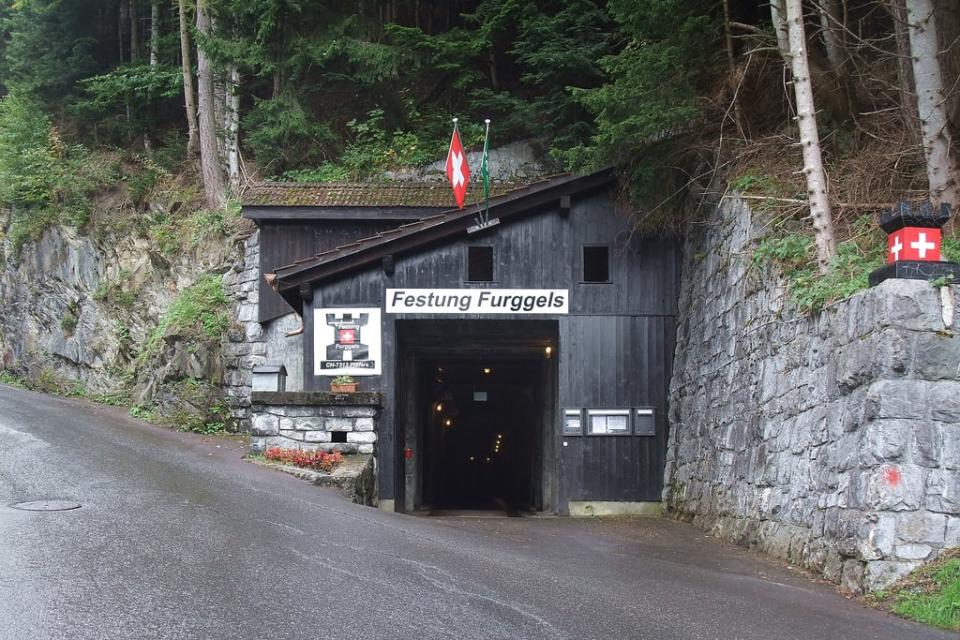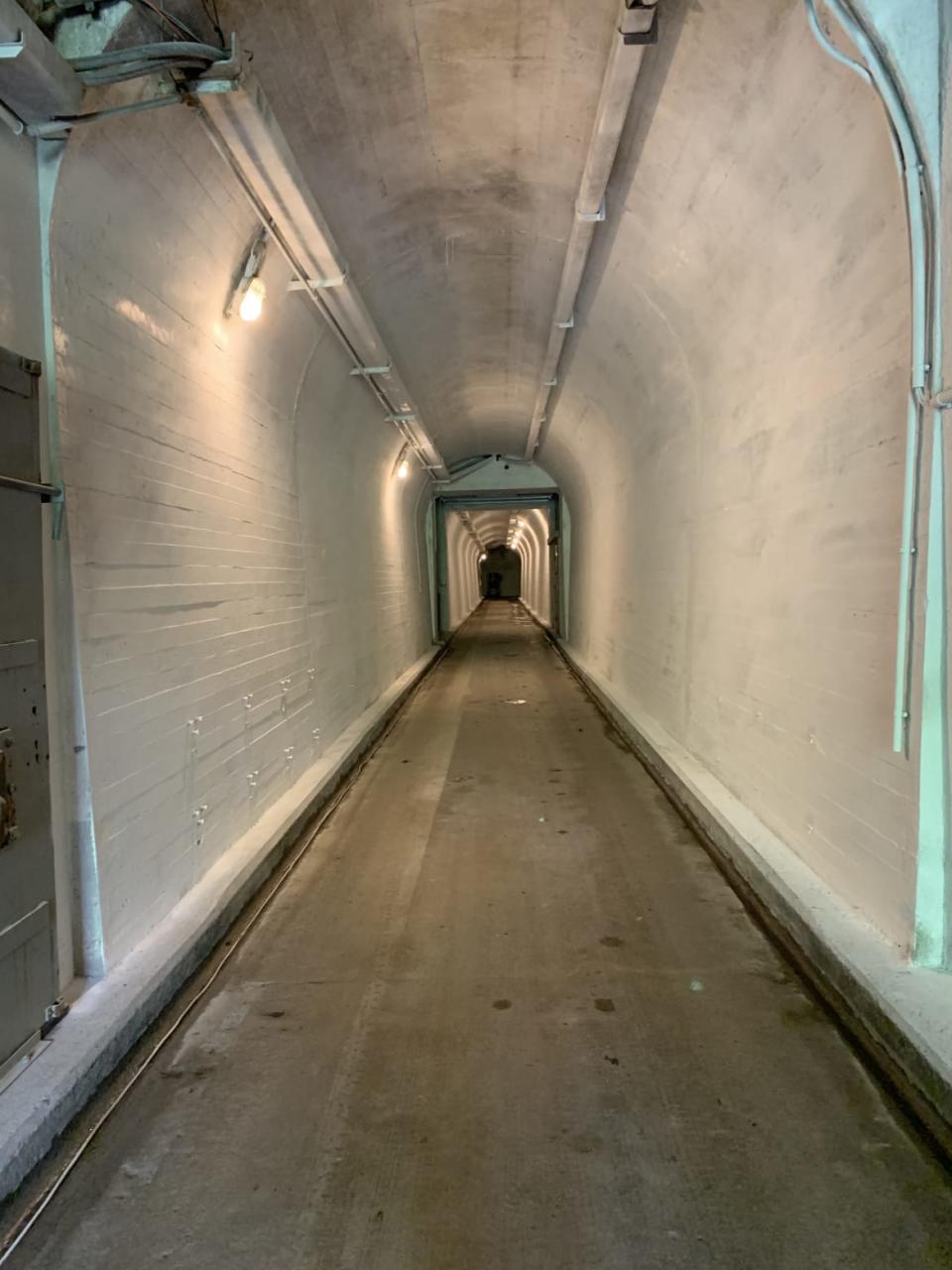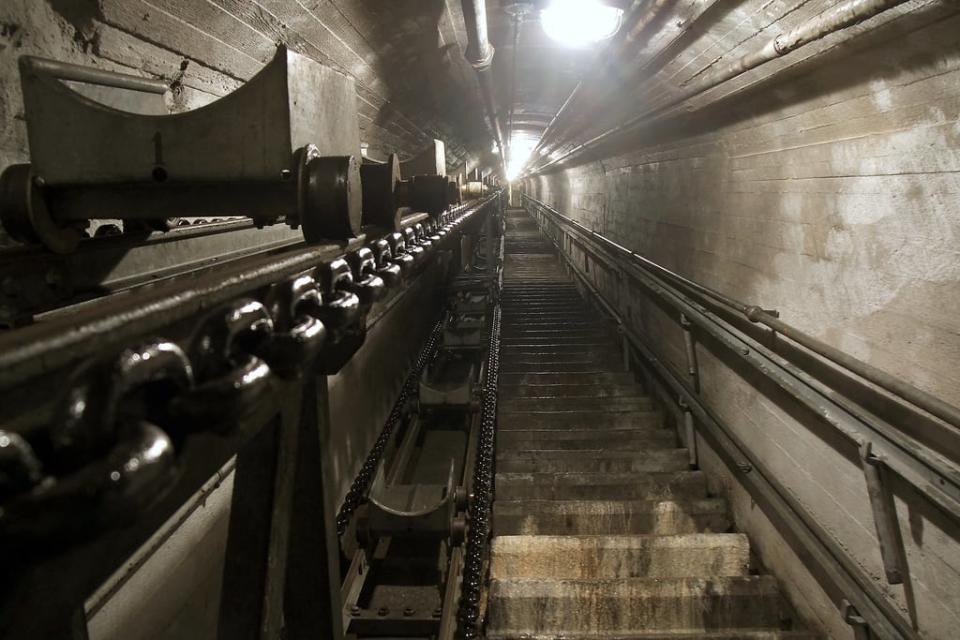The Zany Quest to Solve Gravity in an Abandoned Bunker Under the Swiss Alps

- Oops!Something went wrong.Please try again later.
When driving up a quiet lane close to the border between Switzerland and Liechtenstein, you’d be forgiven if you glossed over an unassuming wooden shed on the side of the road bearing a sign that reads “Festung Furggels.” Nearly 300 feet under the surface, however, physicists are performing a battery of physics experiments inside a military fortress built during World War II. Their tests aim to nail down the value for a basic yet elusive constant—those in the know call it simply “Big G.”
That’s a reference to the gravitational constant, a fundamental value that possesses the rare and powerful characteristic of not varying across space or time. The speed of light in a vacuum and the magnitude of the charge carried by a single electron are two other examples of these unchanging constants, the values of which can only be determined experimentally and not from other known numbers.
The importance of fundamental constants can’t be overstated: Big G plays a key role in both Newton’s law of universal gravitation and Einstein’s theory of general relativity, from which mounds of other physical calculations and applications spring up (like our ability to use GPS to navigate).

Festung Furggels, the name of the fortress (Fort Ferkels in English).
But it’s an open secret that scientists are not very sure of Big G’s exact value—in fact, every other fundamental constant is more precisely known than it, said University of Washington physicist Eric Adelberger.
“It’s the least precisely known fundamental constant, simply because gravity is so very, very weak,” Adelberger told The Daily Beast.
The accepted estimate for Big G has troubled scientists for years. It’s been called a “black eye” for the field of physics, and a “serious issue” that needs addressing. The former director of the International Bureau of Weights and Measures (the governing body of measurement standards) has even weighed in on the issue, writing that “the imprecision in G is irritating.”
Currently, the accepted “best guess” for the value of Big G has an uncertainty of 22 parts per million—but that imprecision is not even the biggest problem with estimates, said Jürg Dual, an engineering researcher at ETH Zürich. It’s the fact that independent teams of physicists aren’t able to validate each other’s values for Big G, even when they use the same equipment and methods.
There is no overlap among different group’s estimates, Dual told The Daily Beast. “Why is that?” he said.
In 1991, Dual and a graduate student devised an experiment that eschewed the typical materials—balances, thin wires, pendulums, and drop towers—in favor of a pair of vibrating metal beams. His reasoning was that these trials could be biased by the presence of undiscovered massive items, such as buried cannonballs.
At the time, Dual couldn’t secure funding for the idea and the graduate student moved on to another position, but he said the main issue with the project was that the measurement and computing technology of the ’90s was not powerful enough. “I let it sleep and said to myself, ‘I will restart again before my retirement,’ and that's where we are,” he said.
Starting in 2018, Dual has taken up the mantle of his old idea, going as far as to rent out three of Fort Furggels’ 190 underground rooms. The renovated Swiss bunker came in handy as a temperature-stable experimental unit where Dual and his colleagues could set up the beams and measure the amount one wiggles in response to the other’s gravitational pull. The results of his efforts were published Monday in the journal Nature Physics.

Dual said that with this vibration-based experiment, unlike traditional methods, he is not concerned about the interference of hidden cannonballs—a good thing, since the surrounding countryside and fort itself are replete with decommissioned cannons.
Optimizing the experiment for precision meant removing as many sources of error as possible. When Dual’s team visited the fort to make manual adjustments to the setup, they needed to wait several days for their emitted body heat to dissipate from the room before restarting their trial.
Ultimately, they calculated a value for Big G that was 2.2 percent higher than the current accepted metric. This number represents a promising start for the nontraditional wave-based methodology, wrote Christian Rothleitner, a mass researcher at PTB, the National Metrology Institute of Germany, in an accompanying Nature Physics paper.
“Their experiment is entering into unknown territory for verifying Newton’s law of gravitation—an important path to follow towards a more complete understanding of gravitation,” he wrote.

Though Dual’s team was not able to pinpoint Big G with higher precision than standard methods, Rothleitner told The Daily Beast that he liked the paper “very much, because it’s so different.”
Still, not all in the physics community were as hopeful about the team’s experiment.
“It’s a carefully done experiment, but I can't see the point of it,” Adelberger said, noting that traditional methods have managed to attain precisions three times lower than the vibrating beam setup. “It’s much more complicated than the leading ways” of calculating Big G and might even introduce more potential sources of error, he added.
The Door to Fusion Energy Might Have Just Been Unlocked
Dual conceded that his idea will need fine-tuning. “We are not as precise as we would like to be,” he said. Still, he said he believes that increasing the method’s precision is possible, and it has the potential to impact something as large as “how we perceive the universe.”
His current experiments in the fort aim to measure Big G by making the beams rotate, not just vibrate. Preliminary results have supported his published calculations, he said; this research is something of a swan song for Dual, who plans to retire at the end of July. The experience has provided a lively bookend reminiscent of his early career:
“It's been a lot of fun to get back into experimenting,” he said.
Got a tip? Send it to The Daily Beast here
Get the Daily Beast's biggest scoops and scandals delivered right to your inbox. Sign up now.
Stay informed and gain unlimited access to the Daily Beast's unmatched reporting. Subscribe now.

